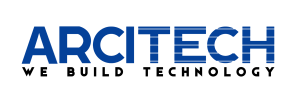In today’s fast-paced world, businesses need innovative solutions to thrive, and Flutter app development has emerged as a powerful tool. This blog explores how Flutter’s unique features can revolutionize your business operations. From creating seamless user experiences to streamlining development processes, Flutter has the potential to redefine how you connect with customers and expand your market presence.
1: Cross-Platform Advantage
Unified Codebase:
Flutter’s unique advantage lies in its ability to use a single codebase for both Android and iOS platforms. This means developers can write code once and deploy it on multiple platforms, saving time and effort that would otherwise be spent on separate development.
Consistent User Experience:
With Flutter, you can ensure that your app maintains a consistent look and feel across various devices and operating systems. This uniformity is essential for building a strong brand identity and providing a seamless user experience.
Cost and Time Savings:
Developing two separate apps for different platforms can be resource-intensive. By utilizing Flutter’s cross-platform capabilities, you can significantly reduce development costs and time-to-market. The shared codebase streamlines maintenance and updates, further contributing to cost efficiency.
2: Native Performance
Compiled to Native Code:
Flutter compiles code to native ARM code, which results in apps that perform with native-like speed and efficiency. Unlike some cross-platform frameworks that rely on web views, Flutter apps operate at the native level, ensuring optimal performance and responsiveness.
Hot Reload:
One of Flutter’s standout features is its “Hot Reload” functionality. This allows developers to instantly see the impact of code changes in real-time, without the need to restart the app. This accelerates the development process, making it easier to identify and fix issues swiftly.
Reduced Bugs and Crashes:
Flutter’s consistency in UI elements and widgets across platforms reduces the chances of compatibility issues that can lead to bugs and crashes. The framework’s reliability contributes to more stable apps that provide a smoother user experience.
3: Rich and Responsive UI
Widget-based Architecture:
Flutter’s architecture revolves around widgets, which are reusable UI components. This approach enables developers to create intricate and customizable UI elements, resulting in visually appealing and engaging app interfaces.
Customizable Widgets:
With Flutter, developers can customize widgets to align with your brand’s visual identity. This means your app can have a unique and captivating design that resonates with your target audience.
Smooth Animations:
Flutter’s animation system is designed to deliver smooth and fluid animations. This adds an extra layer of interactivity and engagement to your app, enhancing the overall user experience.
4: Rapid Development
Efficient Development Cycle:
The Flutter app development process is a result of its single codebase and widget-based architecture. This allows developers to work more efficiently, reducing the time needed for app creation.
Iterative Testing:
Flutter’s “Hot Reload” feature plays a crucial role in iterative testing. Developers can make changes to the code and instantly see the impact, facilitating quick testing and iteration cycles that lead to higher-quality apps.
Faster Updates and Features:
The ability to make quick changes and see immediate results means that updates and new features can be implemented faster. This agility allows your app to stay up-to-date with the latest user expectations and market trends.
5: Enhanced User Experience
Fast Performance:
Flutter’s native performance ensures that your app loads quickly and responds rapidly to user interactions. This is essential for providing a positive user experience and preventing user frustration due to slow loading times.
Intuitive Interfaces:
The combination of customizable widgets and consistent design principles enables developers to create interfaces that are intuitive and user-friendly. This enhances usability and reduces the learning curve for new users.
Interactive Elements:
Flutter’s capabilities go beyond static interfaces. Developers can incorporate interactive elements such as animations, gestures, and multimedia to make the app more engaging and enjoyable for users.
6: Broad Market Reach
Multi-Platform Availability:
One of the most significant advantages of Flutter is its ability to create apps that work seamlessly on both Android and iOS platforms. This broadens your potential user base, as you can target users on different devices.
Reduced Development Costs:
Building separate apps for Android and iOS requires separate development efforts and resources. Flutter’s single codebase reduces these costs, making app development more cost-effective.
Faster Time-to-Market:
With a single codebase, the development process is streamlined. This means you can bring your app to market faster, gaining a competitive edge by being among the first to offer your solution to users.
In an ever-evolving digital landscape, Flutter app development has the potential to transform your business by providing a cross-platform solution that delivers native performance and an exceptional user experience. From cost and time savings to rapid development cycles and enhanced user interfaces, the advantages of Flutter are numerous. By embracing this framework, businesses can elevate their mobile app strategy and position themselves at the forefront of innovation. As customers demand seamless experiences across platforms, Flutter empowers businesses to meet these expectations and drive growth in a competitive market. As you embark on your mobile app journey, Flutter emerges as a powerful ally that can reshape how you engage with customers and expand your market presence.



